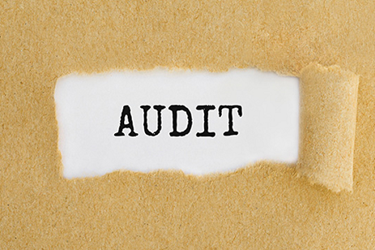Will CDMOs Commit To Fully Transparent Audits?
By Greg Weilersbacher, Eastlake Quality Consulting

The first two articles in this series discussed the physical elements of facility design that sponsors look for in their contract development and manufacturing organizations (CDMOs) and sponsor requirements for dedicating equipment to GMP operations, equipment redundancy, and immediate disclosure of equipment and facility issues. This article presents solutions to improve transparency during sponsor audits of CDMOs.
Virtual Sponsor Audits For Full Transparency
There is a standard process for qualifying a CDMO. The sponsor’s technical and outsourcing staff members initiate preliminary discussions with a CDMO to evaluate capabilities and expertise and tour the facility. If the evaluation is favorable, the sponsor’s quality staff reaches out to the CDMO and attempts to schedule an on-site audit. This can be challenging, as most CDMOs book audits two to four months in advance.
Once the date is confirmed, the sponsor’s quality group (SQG) forwards an audit agenda to the CDMO. In my experience, the audit agenda for a new CDMO is almost certain to be boilerplate. Rarely is anything new requested in an initial audit. The SQG flies to the CDMO’s facility and performs a one- or two-day audit, after which they return to their home office to write the report. Another month flies by, and audit observations are sent to the CDMO, which takes yet another month to issue a written response. The SQG takes a few more weeks to review the CDMO’s responses and determine if they are acceptable. The sponsor’s outsourcing staff weighs the audit report against the CDMO’s work proposal to make the final decision. Does this seem like a lot of wasted time? It should. This is time that should be spent manufacturing and testing the sponsor’s product. There is a faster approach to meeting the SQG's needs.
Some CDMOs use document-sharing portals to upload their client’s non-confidential documents such as official SOPs and forms, organizational charts, equipment lists, cleanroom air-flow diagrams, and regulatory inspection dates. This is where nearly all CDMOs stop. While these documents are of some value, the SQG needs to inspect documentation related to the day-to-day operations, support systems, and equipment.
An audit of a GMP lab requires review of validation reports specific to ultra performance liquid chromatography (UPLC), high performance liquid chromatography (HPLC), gas chromatography (GC), refrigerators, and freezers; calibration records for balances and drying ovens; temperature and humidity traces for stability chambers for the last year; and method validation reports. SQGs often request supporting documentation for the actual equipment that will be used for their project rather than an error-free example validation of an HPLC. Likewise, manufacturing operations are supported by a wide variety of systems: calibration and validation reports for HVAC, clean steam, autoclaves, bioreactors, incubators, and purification skids. But that’s not the end of the documentation trail. There’s the quality system documentation that is pivotal to all CDMOs such as SOP training records and annual GMP training, pest control service reports, environmental monitoring, redacted quality metric reports that trend deviations and corrective and preventive actions, and complaints.
SQGs review this documentation during their on-site audit, so why not upload these records to document-sharing portals? Assign the SQG with read-only access to the portal for a defined period of time. Redact documents for client confidentiality, where needed, and prevent copying, downloading, forwarding, and printing. The SQG could perform their detailed review from the comfort of their office.
All CDMOs promote full transparency to their sponsors. It’s a cliché that rarely rings true. All it takes is a bit of digging from a good auditor to reveal the dirty laundry the CDMO prefers to remain hidden. It’s like hiding personal income from the IRS: they will eventually find out all of your revenue sources. To live up to their claim of full transparency, CDMOs need to stock the portal with all of the GMP documentation necessary to fully support a sponsor’s virtual audit.
The Live/Interactive Video Tour
But isn’t there a benefit to being on-site to conduct the audit? Yes, there is. The primary advantage is seeing how the CDMO works in actual operation. SQGs place great value in walking the facility, speaking with and questioning employees, examining equipment calibration labels and logbooks, and getting a sense of the cleanliness and organization of the company. While some CDMO’s websites feature videos of how their facility looks on the “perfect day,” they are not interactive and don’t provide the SQG with the information needed to assess the company’s compliance. Combining a fully stocked document portal with a live and interactive video tour of the CDMO’s facility puts the sponsor experience first on the list of the CDMO’s priorities.
Since high-quality live video technology has been available for years and is quite affordable, a live tour is easy to facilitate. During the tour, the CDMO’s staff speaks to the sponsor in real time to address all comments and questions. Equipment and room logbooks could be inspected by video and screen shots. This is true sponsor-centricity.
The CDMO’s Commitment To Data Integrity
Much has been written on GMP data integrity in recent years. While regulations such as 21 CFR 211 touch on requirements for data integrity, guidance documents from the FDA, WHO, and the Medicines and Healthcare products Regulatory Agency (MHRA) provide both high-level and detailed information useful in complying with regulations.1-4 With an abundance of information available, it is amazing that many CDMOs and GMP testing facilities do not have written policies available to current and potential sponsors describing their approach to data integrity.
It’s foolhardy for sponsors to assume their paper-based CDMO doesn’t need to comply with data integrity requirements and that these controls are only for electronic systems. It’s equally illogical to assume the compliance of a GMP testing laboratory that claims to be fully electronic. The WHO’s 2015 guidance on specifications for pharmaceutical preparations provides practical application of ALCOA+ — ensuring that data is attributable, legible, contemporaneous, original, accurate, complete, consistent, enduring, and available — for paper, hybrid (i.e., combination of paper logbooks and electronic instruments without unique logins, audit trails, etc.), and fully electronic systems. Sponsors should look for GMP service providers that are fully committed to these requirements and offer written policies describing their approach to data integrity for each type of GMP system.
The policy needs to go much deeper than general statements such as, “We are committed to data integrity compliance.” The CDMO’s data integrity policy should detail how they ensure compliance with legacy paper-based systems (e.g., paper logbooks, material receipt records such as packing slips, paper certificates of analysis, and paper BSE-TSE (bovine spongiform encephalopathy - transmissible spongiform encephalopathy) statements that arrive with the shipment). Paper-based systems must comply with data life cycle requirements of data recording, processing, reviewing, reporting, retaining, and retrieving.
The CDMO’s data integrity policy must also describe the company’s approach to hybrid systems. Stand-alone lab and manufacturing equipment such as pH meters, balances, and older equipment such as FTIR (Fourier-transform ion cyclotron resonance) and UV/Vis (ultraviolet/visible spectroscopy) instruments are especially problematic as they often do not require a unique user login; do not have assignable access rights to users, supervisors, quality assurance, and administrations; do not auto-assign sample number and date-/time-stamp data; and do not have the capability of audit trails. Sponsors should insist their CDMO’s data integrity policy addresses all potential ALCOA-plus compliance issues with stand-alone systems.
Finally, CDMOs that use electronic systems for contemporaneous data acquisition and processing (e.g., HPLCS, GCs) are still subject to mistakes made by employees who set up equipment and run samples, enter vague or wrong reasons for modifying sample names or instrument methods, review and approve data electronically, and inspect system audit trails (e.g., tracking of login denials, changes to system policies, changes to user privileges) and project audit trails (e.g., sample sets, calibration curves, method changes, processing of data, deletion of result files). The CDMO’s data integrity policy should describe the procedures in place to prevent circumventing of electronic data integrity controls by employees.
The data integrity policy should be available to the sponsor as part of their virtual audit of the CDMO. The sponsor should not underestimate the importance of this document. It reflects the CDMO’s knowledge of their systems and transparency to the sponsor and regulators. Most importantly, it describes the controls employed to mitigate the data integrity risks of their legacy paper-based and hybrid systems.
The Takeaway
Full transparency is a misnomer. GMP service providers wave this flag in marketing and advertising but rarely live up to the sponsor’s expectation. Sponsors with strong quality groups are great at uncovering a CDMO’s dirty laundry during on-site audits, thereby soiling the transparency flag. It’s time to change the audit paradigm.
Virtual audits provide a convenient and time-saving approach to evaluate the compliance of CDMOs and aid in the selection of a supplier. The success of a virtual audit, however, is dependent on the CDMO’s willingness to live up to full transparency. Secure data portals must be populated with all the GMP records needed to complete an exhausted audit of the CDMO’s compliance. This must include written data integrity policies for paper, hybrid, and electronic systems. Anything short of full disclosure points to the supplier’s reluctance to commit to meeting the sponsor’s needs.
Sponsors have a powerful role to play in the selection of manufacturing facilities and testing labs and should demand more from their suppliers. The articles in this series discussed new concepts in CDMO facility design that focus on the sponsor’s need to view operations from the convenience and confidentiality of dedicated offices. Sponsors are concerned with the prevention cross-contamination, and CDMOs should be chosen not only based on their ability to manufacture the product but also on the configuration of their cleanrooms and airlocks for proper flow of materials, personnel, equipment, and waste streams — so dirty equipment and waste are not tracked into clean areas.
CDMOs requiring manufacturing staff to share GMP equipment with R&D departments run the risk of compliance issues that may impact the quality of the product being manufactured and tested, as well as the sponsor’s timelines. Additionally, the likelihood of equipment failure necessitates duplicate equipment of the same manufacturer and model. Sponsors should select GMP service providers that dedicate equipment to GMP departments and have redundant equipment in case a breakdown occurs.
References:
- FDA – Data Integrity and Compliance with Drug CGMP, Questions and Answers, Guidance for Industry, December 2018.
- FDA, Center for Drug Evaluation and Research — Current Expectations and Guidance, Including Data Integrity and Compliance with cGMP, March 2017.
- World Health Organization — Guidance of Good Data and Record Management Practices, Chapter 5 and Appendix 1 in WHO Expert Committee on Specifications for Pharmaceutical Preparations, September 2015.
- MHRA — GXP Data Integrity Guidance and Definitions, March 2018.
About The Author:
 Greg Weilersbacher is the founder and president of Eastlake Quality Consulting, a GMP consulting firm based in Southern California. Over the last 25 years, Weilersbacher has held director and VP positions leading quality assurance, quality control, analytical chemistry, materials management, GMP facilities, and product manufacturing in biotech and pharmaceutical companies. His unique experiences and technical background have led to the manufacture and release hundreds solid oral, sterile, and biologic investigational products to clinics in the U.S. and abroad. Weilersbacher can be contacted at weilersbacher.greg@gmail.com.
Greg Weilersbacher is the founder and president of Eastlake Quality Consulting, a GMP consulting firm based in Southern California. Over the last 25 years, Weilersbacher has held director and VP positions leading quality assurance, quality control, analytical chemistry, materials management, GMP facilities, and product manufacturing in biotech and pharmaceutical companies. His unique experiences and technical background have led to the manufacture and release hundreds solid oral, sterile, and biologic investigational products to clinics in the U.S. and abroad. Weilersbacher can be contacted at weilersbacher.greg@gmail.com.
